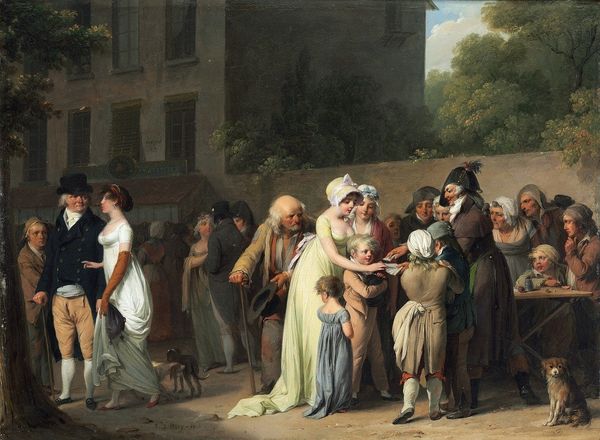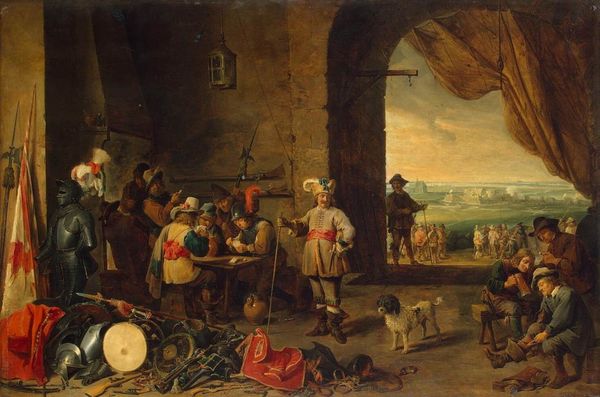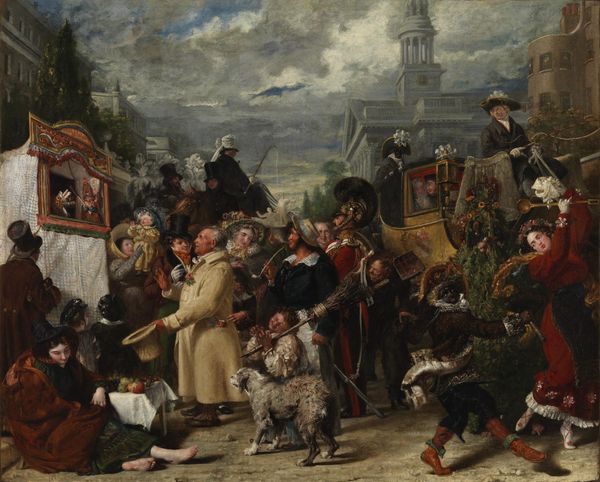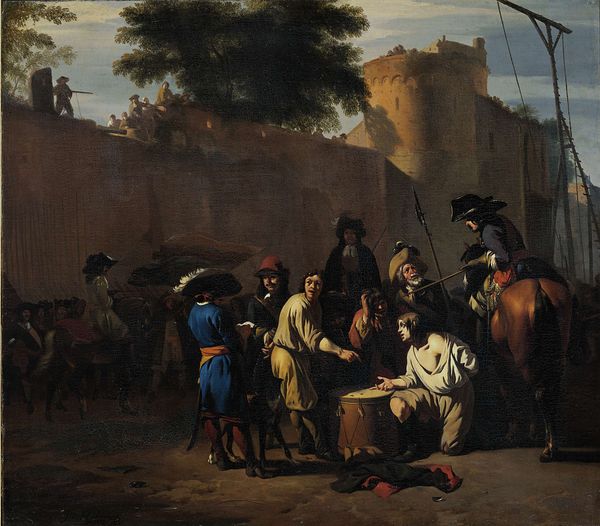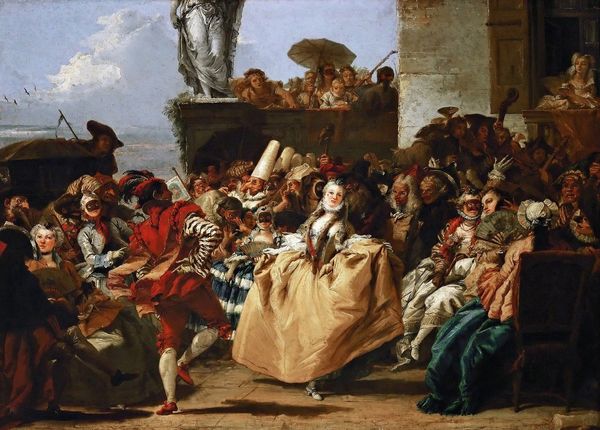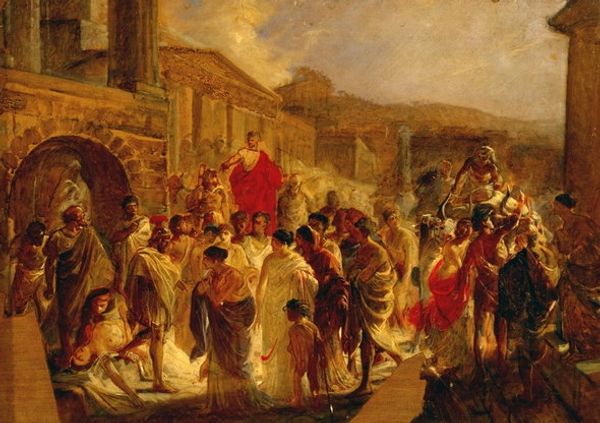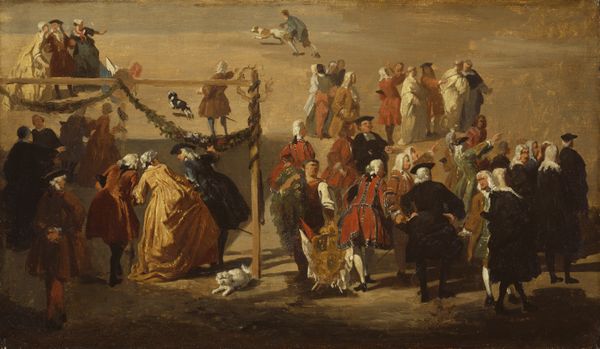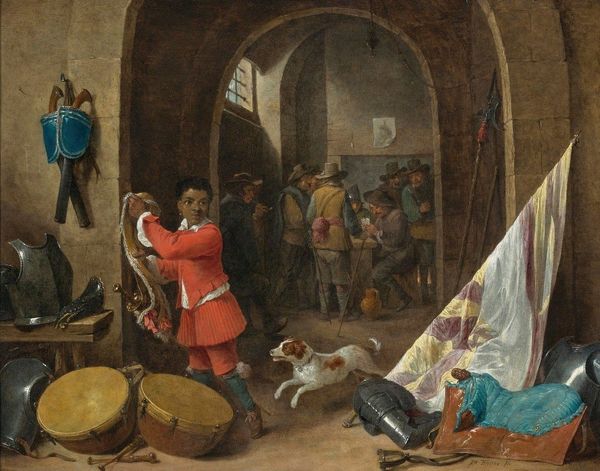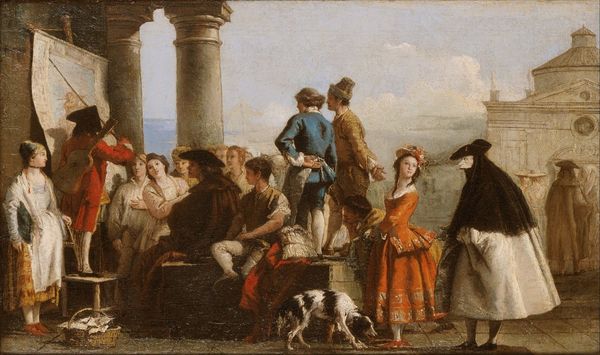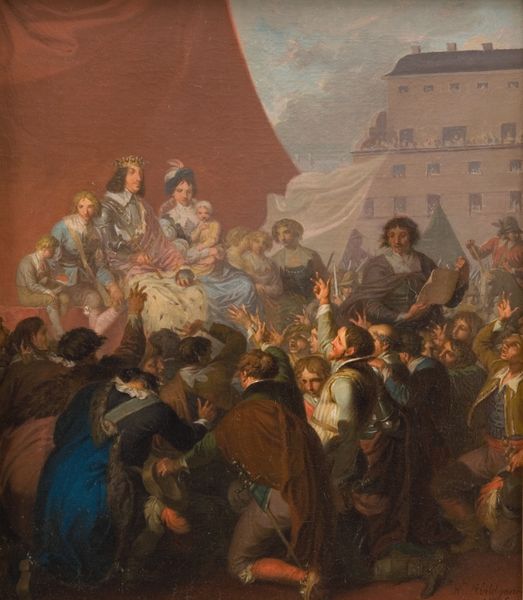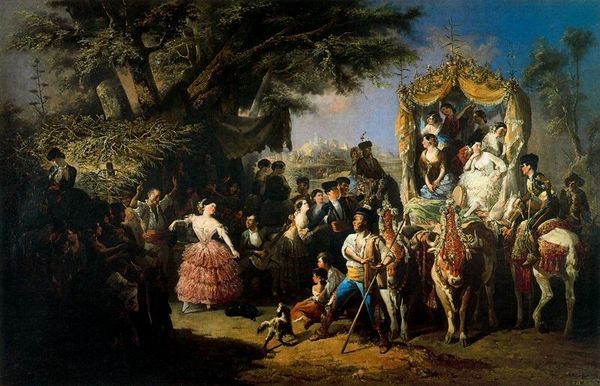
painting, oil-paint
#
gouache
#
figurative
#
baroque
#
painting
#
oil-paint
#
figuration
#
oil painting
#
cityscape
#
genre-painting
#
history-painting
Copyright: Public Domain: Artvee
Editor: Here we have Giovanni Domenico Tiepolo’s “The Charlatan,” painted in 1756 using oil on canvas. It's bustling! A crowded scene, full of figures in masks. There's a performance happening, or at least *something* is happening in the center. What draws your eye when you look at it? Curator: My gaze darts all over, honestly! There's such a layered performance unfolding. Not just the obvious charlatan hawking his wares, but the costumed characters—those masks suggest hidden identities and perhaps a societal critique bubbling beneath the surface. It’s like a stage set, isn't it? The architecture frames the action perfectly, but what do you make of the colours? That single block of bold red in the scene? Editor: That's the charlatan's coat, right? It *does* draw attention. So, the masks create a literal *and* figurative performance... but a performance of *what*, exactly? Deception? Theatre? Curator: Both! And something deeper, I suspect. Think about Carnival, a time for upending social norms. Perhaps Tiepolo’s showing us how easily we’re all duped by appearances, by smooth-talking ‘experts,’ whether we're buying medicine or philosophies. Editor: Ah, so it's not just a snapshot of Venetian life, but a comment on it. The figures are literally hiding in plain sight, buying whatever this guy is selling. It kind of speaks to today's world in a strange way. Curator: It's unsettlingly relevant, isn't it? And to think, this was just a small, informal painting for a private collection – like a witty aside from a master storyteller. Perhaps our charlatan still performs even today. Editor: It really highlights how art can be both historical and deeply, almost hauntingly current, doesn't it? Curator: Absolutely. Art, like a charlatan at its finest, still knows the art of survival, centuries later.
Comments
No comments
Be the first to comment and join the conversation on the ultimate creative platform.
